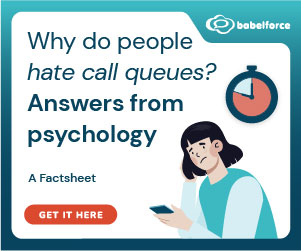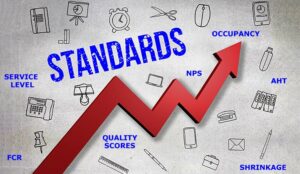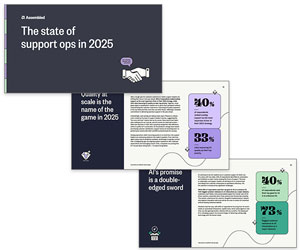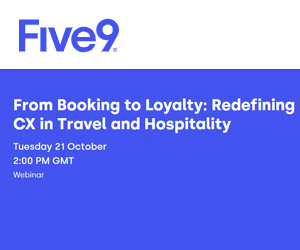If you’ve ever been at the helm of a 24/7 contact centre operation, you’ll know there are key differences to look out for that set them apart from a standard-hours operation.
To shed light on what these unique challenges are, our Editor – Megan Jones – spoke to Dan Pratt, Dan Smitley, Irina “Mateeva” Hollatz, Jamie Storer, John Evans, and Rob Smith about what it really takes to support your agents and customers when your doors are never closed.
You Need to Be Smarter About How You Support Peaks and Troughs in Customer Demand
One of the first things to note is that being open 24/7 does not automatically mean that you must offer every service across every channel all the time.
From a cost perspective alone, it just doesn’t make good business sense! Instead, think smarter and lean into your data to work out how many people you need, when you need them, and what services and channels they are going to be supporting.
It’s also key to think about general customer behaviour and expectations and NOT pander to outliers, as one customer calling in the middle of the night to try and submit a loan application (for example) does not warrant someone being on standby all year round on the off-chance this happens again. It’s about applying some common sense.

“My bank claims that they’re working 24/7, but if I call after five o’clock, they’re not going to be open for every single enquiry that I might have.
For example, I would be able to call in an emergency to report my card being stolen, but not to chat about a general enquiry for a loan application.” – Irina “Mateeva” Hollatz, WFM Transformation Consultant at RightWFM
It can also really help to multi-skill your agents who are on the quieter shifts, as this will help you direct various queries to them – rather than having several representatives from different teams working through the night – and keep your operation running far more efficiently.
However, if you can’t support a channel properly, don’t do it at all!

“If you’re advertising that 2am on a Sunday morning is a serviceable time for a customer to phone you, then it should be managed in exactly the same way as 3pm on a Wednesday afternoon.
Quite simply, if you’re going to do it, then it needs to be done properly!
You can’t say, “Due to the fact it’s 2am, you will likely experience long call waiting times.” – Dan Pratt, Founder & Director of DAP Consultancy
There are additional considerations for multisite operations too, as it can be useful to stop and consider whether you really need every site open 24/7 to deliver a 24/7 service.

“We’ve toyed with various models over the years where we’ve opened sites at certain times of the week or not opened sites at all. For example, one of our sites never opens overnight.
We’re also currently going through a process to review what our overnight working strategy should be – asking ourselves, “which of our centres do we really need to have open all of the time?” – John Evans, Regional Director, Service Design, Planning & Insight at Practice Plus Group (111 services)
Creating a playbook can help you manage spikes in service demand. For advice on this, read our article: Using Scheduling Playbooks to Manage Spikes in Service Demand
Agents Need Stability About Whether They Are Supporting the Day OR Night Shifts
You must also consider agent wellbeing, as constantly moving between day, evening, and night shifts can really compromise their lifestyle and mental health.
A far more considerate approach is to put people into buckets of shift patterns, so their exact shifts may change but broadly speaking they will always be in the “Evening Bucket” and can plan their personal lives around being unavailable between 4pm and 11pm, for example.

“Putting people into buckets of shift patterns gives them more stability in their lives and makes it possible to still offer shift bidding, but within defined parameters.
Quite simply, you’re going to lose every one of your agents if you require them to pick up a variety of shifts across a 24/7 operation with no routine or consistency.” – Dan Smitley, Founder of 2:Three Consulting
When reviewing possible shift patterns, you should also consider the practicalities of HOW your agents are going to get to work, and have one-to-one conversations about what works best for them.
You need to consider personal safety here, as even if buses do run through the night, you really don’t want lone agents travelling on public transport at 3am.
Despite some of the logistical challenges, there are lots of agents out there specifically looking for night work. So much so that if you put out an advert for a general advisor role to support a 24/7 operation, you are unlikely to get many applications. However, if you put that same ad out with a stipulation of overnight work, you’d likely see far more applications.
If you are looking to improve your job adverts, read our article: Are Your Job Ads Holding Back Your Contact Centre Recruitment?
Don’t Underestimate the Extra Support Your Night Workers Need
Once you’ve got your shift patterns covered, you also need to make sure you can keep your night workers busy – and you may need to get creative here!
For example, if there’s very low volume overnight, it can really help to look beyond the contact centre for support, if needs be.

“In one role I worked in, I found that the team on the graveyard shift didn’t have enough work to keep them busy, so we looked beyond the contact centre at other departments that might need support.
We quickly discovered that our mailroom team needed help clearing their backlog, which resulted in a win–win of keeping our agents busy between calls whilst helping support the wider business. It really paid to look beyond our silos.” – Jamie Storer, Sr Manager, Workforce Optimization at Columbia Sportswear Company
Don’t forget that working overnight makes people tired too, as they are always fighting against biology and working at their circadian low.
Not only that, but the nature of calls people are taking can differ overnight and be more challenging too. Particularly in healthcare, for example, where you tend to get more mental health-related calls.
Despite these higher needs, it’s largely impractical to have lots of supervisors (if any) on site to support night workers. However, one of the ways to overcome this is to have managers on call for emergencies.
“To help support our night workers with any escalations or IT issues, we operate an on-call system, where all of our operational managers across the business spend one week in every six “on call” – essentially going to bed with their mobile switched on.
Some things just can’t wait until 8am the next morning! However, we’ve learnt that we must have clear boundaries in place about what it’s actually worth getting someone out of bed for.” – Rob Smith, 111 Head of Design, Performance & Delivery at Practice Plus Group
This isn’t just about IT issues or challenging customers either, it can also be about HR-related issues. For example, if someone comes in under the influence or suffers an injury at work.
When you’ve got teams working 24/7, you need to review how you execute your general communications strategy too.
For example, if you are hosting a Townhall in the middle of the day and responding to live questions, those possibly just watching the recording back during a night shift could feel left out.
So why not gather questions in advance, in a more fair and transparent way, or experiment with your Townhall meeting times to be more inclusive?
What’s Been Your Experience of Running a 24/7 Operation?
Join our LinkedIn Community and let us know.
With thanks to the following people for sharing their thoughts and experience for this article:
- Dan Pratt, Founder & Director of DAP Consultancy
- Dan Smitley, Founder of 2:Three Consulting
- Irina “Mateeva” Hollatz, WFM Transformation Consultant at RightWFM
- Jamie Storer, Sr Manager, Workforce Optimization at Columbia Sportswear Company
- John Evans, Regional Director, Service Design, Planning & Insight at Practice Plus Group (111 services)
- Rob Smith, 111 Head of Design, Performance & Delivery at Practice Plus Group
For more information on contact centre opening hours, read these articles next:
- Finding the Ideal Opening Hours for Your Contact Centre
- What Is the Minimum Number of Staff Required for a 24/7 Call Centre?
- Master Seasonal Service Levels – Just Like This!
Author: Megan Jones
Reviewed by: Jo Robinson
Published On: 9th Jun 2025 - Last modified: 15th Sep 2025
Read more about - Call Centre Management, Call Handling, Customer Service, Dan Pratt, Dan Smitley, Forecasting, Irina Mateeva, Jamie Storer, John Evans, Management Strategies, Rob Smith, Scheduling, Shift Patterns, Top Story









































